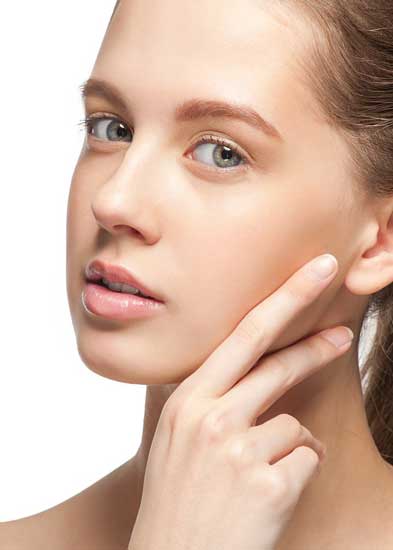How to Distinguish Between Rosacea and Acne

If you’ve noticed that small, red bumps have begun developing on your skin, you might have either rosacea or acne. These two different bumps look so similar that it can be challenging to determine which condition you have. One easy way to figure out if you have rosacea or acne is simply to visit a dermatologist. Your dermatologist can perform a thorough skin exam and give you an accurate diagnosis before explaining your treatment options.
Detecting Acne Symptoms
Acne bumps often develop on the face, but may also affect the back, chest, neck, upper arms, shoulders, and buttocks. Although acne bumps all look similar, there are actually a few different types. Those small, reddish bumps may be regular pimples or they might be whiteheads or blackheads. Papules are raised lesions, while pustules are raised lesions that are filled with pus. Some people develop cystic acne. These cysts are nodules that contain pus or fluids. After acne fades away, it can leave an acne scar.
Identifying Rosacea Symptoms
Like regular acne, rosacea can cause breakouts of small, red bumps or thickened skin along with bumps. However, rosacea is distinguishable from regular acne because it causes other symptoms along with the bumps. Individuals who have chronic inflammatory skin disease tend to blush and flush more easily than other people. In addition to the temporary flushing of the skin, patients with rosacea can develop persistent redness as the small blood vessels in the facial region become swollen and visible. Unlike acne, rosacea can lead to medical complications like ocular rosacea. Ocular rosacea can involve chronic and excessive tearing, eye dryness, flaking at the base of the eyelashes, gritty sensations inside the eyes, and recurring sties. Occasionally, rosacea may even cause enlargement of the nose, which is a condition called rhinophyma.
Swinyer-Woseth Dermatology offers rosacea and acne treatments for patients in Salt Lake City. Our dermatology specialists are dedicated to helping each patient look and feel his or her best. You can request a one-on-one consult and personalized treatment plan from a dermatologist by calling 801-266-8841.
